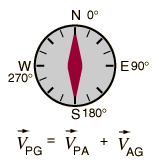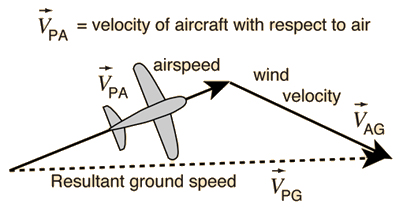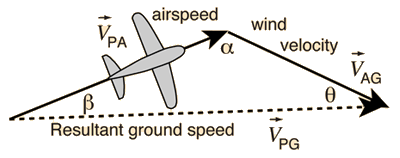Airplane in Wind: Desired Heading and Resultant Speed
 |
 |
Note: The wind direction in this calculation is the direction of air motion, not the direction from which the wind is coming. So if you call a wind from the north a "north wind", then the air motion direction is south and you would enter 180° for the wind angle.
Details about calculation
| Alternate calculations: | Ground Velocity | Wind Velocity |
Relative velocity
| HyperPhysics***** Mechanics | R Nave |
